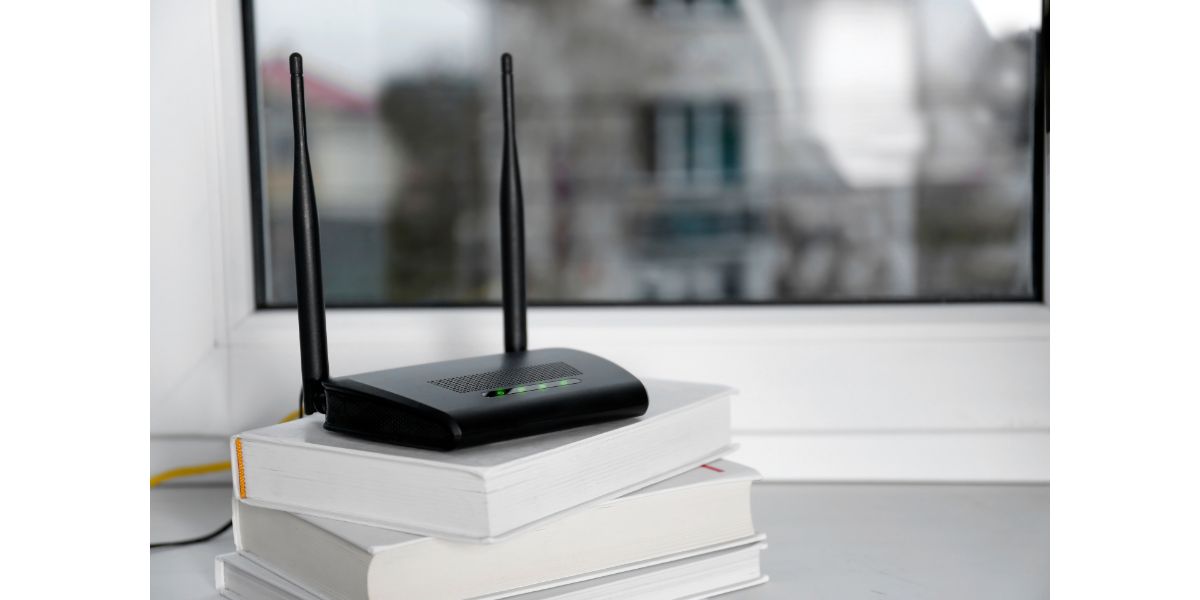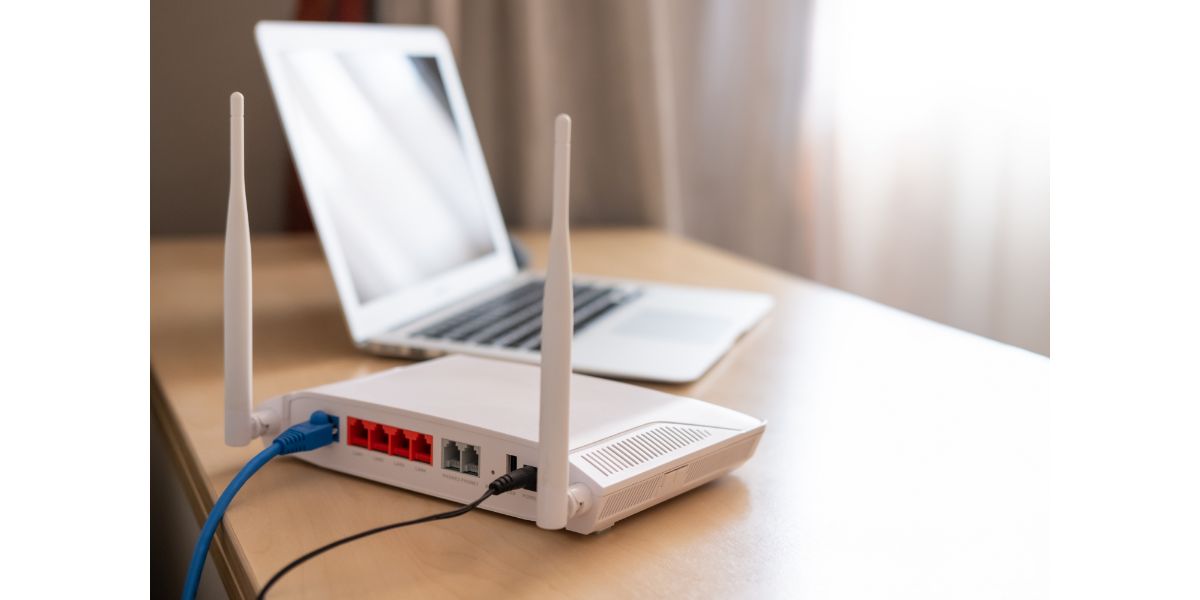Disclaimer: This post may contain affiliate links, meaning we get a small commission if you make a purchase through our links, at no cost to you. For more information, please visit our Disclaimer Page.
A router shouldn’t be placed near a window. While doing so can still provide your home with a good-quality signal, if you want to optimize your Wi-Fi’s range, it’s best to place the router in a more central location, away from walls or any blockages that might weaken it along the way.
Table of Contents
Why Placing a Router Near a Window Isn’t Ideal
Now that you know placing a router near a window isn’t ideal, it’s time to explore why that is the case. To do that, though, you first have to understand how radio signals work.
The waves emitted by your router don’t just broadcast in one direction. Instead, they move like water ripples, covering a wide circular-ish area around them.
For this reason, when you place your router in any location that isn’t central enough (e.g., a corner or a window) you’re significantly reducing its usability.
The waves that could potentially be used by house members are now being broadcast outside, which is far from ideal.
Keep in mind that moving your router to a more central location versus a window, for example, won’t affect the speed of the connection. However, it can affect its reachability, strength, and stability, which can be especially important if you’re trying to broadcast inside a larger space.
Some seem to believe that placing a router near a window allows the signal to “escape” the same way your clothes would once you opened the door to an overfilled closet. However, that’s not how Wi-Fi signals work, and that’s definitely not the case.
That said, you could probably get much better use out of your router if you placed it in a more central location since its broadcast range would fall entirely within your home. When choosing a window location, your neighbors are the only people you’re doing a favor to.
The Best Place for a Router
As mentioned, you’ll want to place your router in the most central location without damaging the overall aesthetic of a room. Finding an adequate position in the dead middle of a particular space isn’t always feasible, so you might have to get creative.
When choosing the best location for your router, it’s important to note where the devices connected to it are usually located. If you’re using a portable device like a laptop or smartphone, think about your favorite spot when planning your router set-up.
Ideally, you want the router to be placed in a central position and in a location with as few obstructions as possible. This way, the signal can travel between them uninterrupted.
Placing your router in a central position in your home achieves two goals:
- It makes it easier to access its full, circular broadcast range.
- It makes it more challenging for your connection to be compromised by external sources.
As you can see, following this placement strategy is a win-win; all you have to do is to find a location that’s as central as it is obscure, as you don’t want the device and cables to obstruct the aesthetic of your room.
Without knowing the layout of your room, we can’t give you specific advice on the best placement for your router. However, what I can tell you is that experimentation is vital when it comes to finding the right location for the device.
Never settle for the first placement you try. Move the router to different areas to see which ones you think look best. Then, turn the device on when located in each of those places to see how or if the connection gets affected.
Again, your Wi-Fi speed will likely remain the same in all instances; however, range, strength, and stability can widely vary.
One rule of thumb is that while placing your router in a more obscure place can be beneficial for the aesthetic of your room, you still want the device to be visible.
If you can see the router from where you’re standing, that speaks to a lack of blockages and obstructions between it and the device you have on hand, which can do wonders regarding the quality of the connection.
Now that you have a better idea of the best placement for your router, it’s time to dive into some additional positioning-related tips and tricks that can help strengthen your Wi-Fi signal.
How To Strengthen Wi-Fi Signal
Here are some positioning tips that can help you strengthen your Wi-Fi signal:
If you find that you still aren’t getting good signals, an old router could be the cause. Check our article on reasons why you need a new router.
Place your router in the room where you spend most of your time
Though Wi-Fi signals can pass through materials like drywall and wooden beams, these obstructions can significantly reduce their strength.
That’s why you want to keep your router in an area where you plan to spend most of your time. Moreover, denser materials like brick or concrete can weaken a Wi-Fi signal, so be wary.
Aim for higher locations
Though many like to place their routers on the floor in an effort to make them less visible, this placement is far from ideal. The floor absorbs a great deal of the signal that’s being emitted by the router.
The lower placement also makes it more difficult for the router to find an obstacle-free path to your devices. So, elevate your router and see how its coverage becomes far more comprehensive.
Stay away from fish tanks
Unlike air, water doesn’t help broadcast a good-quality Wi-Fi signal. Therefore, if you have an aquarium or any other water-based decoration in your home, you’ll want to place your router as far away from it as possible.
The same can be said of reflective surfaces, which can help distort the signal. So, when choosing the placement of your router, do your best to keep it away from mirrors.
Stay away from big electronics
As mentioned, routers operate using radio signals. What you may not know though, is that large metal surfaces can heavily distort radio signals and, unfortunately, most household electronics are made of exactly that material.
That’s why you’ll want to keep your router away from large electronics, and ideally away from rooms with many such appliances (kitchens, for example).
While on the topic, we want to mention that kitchens are the worst rooms for router placement for more than one reason – one of them being that microwaves can seriously interfere with your router’s signal, more so than any other household appliance.
That’s because the radiation emitted by these devices boasts a similar wavelength to that of a Wi-Fi signal, possibly leading to interference.
By keeping the above tips in mind, you’ll be able to find a router spot that’ll optimize its broadcasting range, allowing you to get the most out of your Wi-Fi signal.
While placing your router near a window or wall might make it easier for you to conceal it, know that by doing so you’re sacrificing signal strength and quality.
Conclusion
Placing a router near a window, while possible, isn’t ideal. If you want to get the most out of your Wi-Fi connection, make sure to place your router in a more central location and read through the tips provided above.


